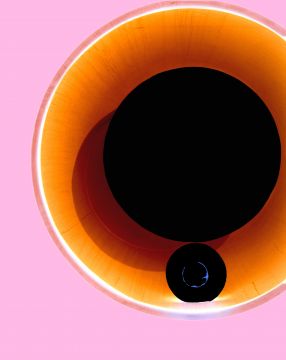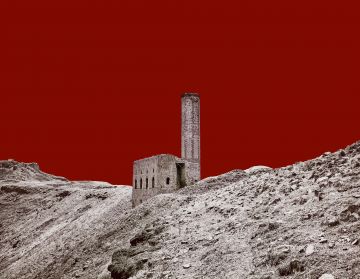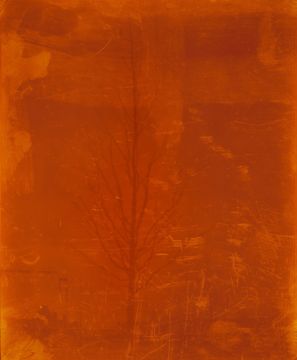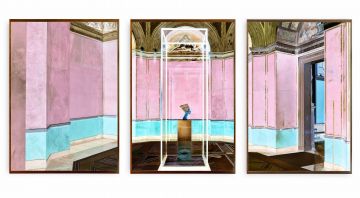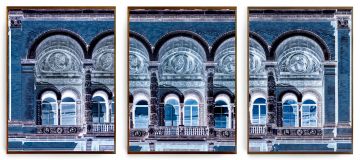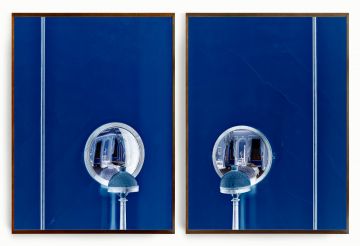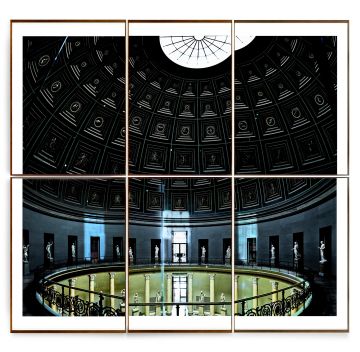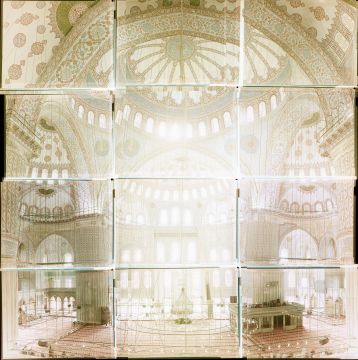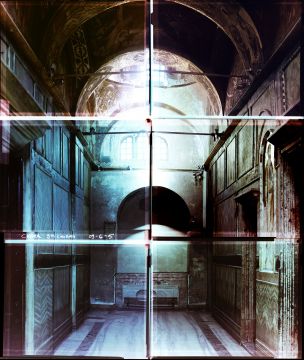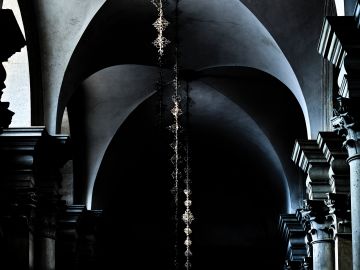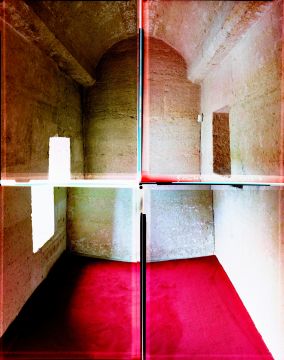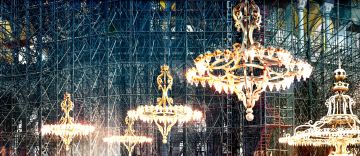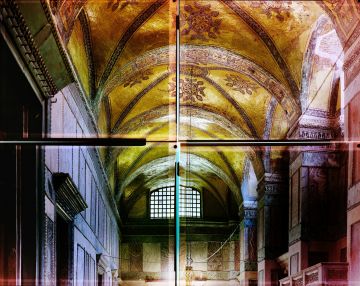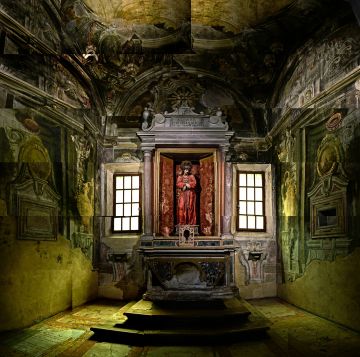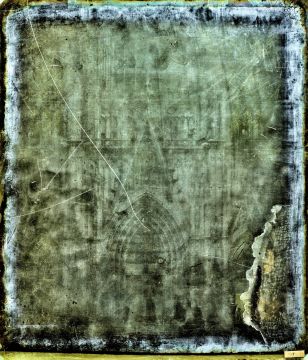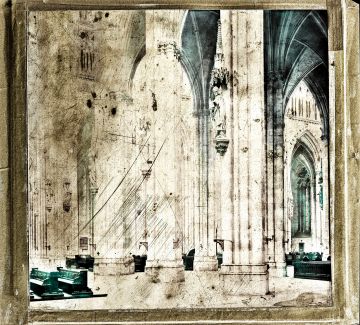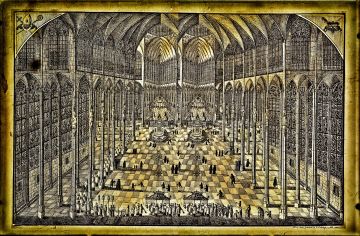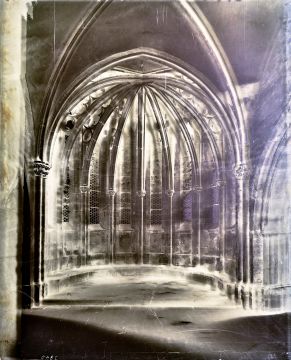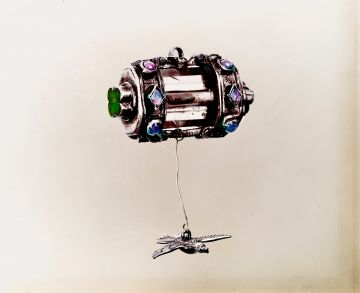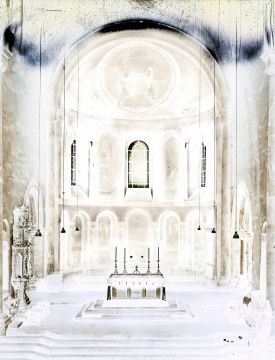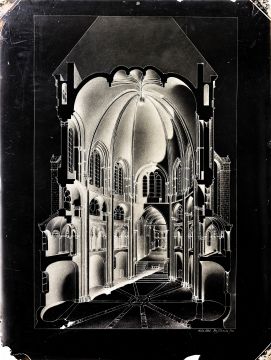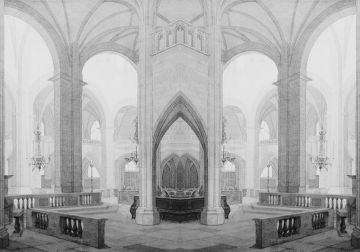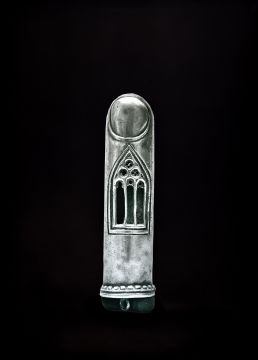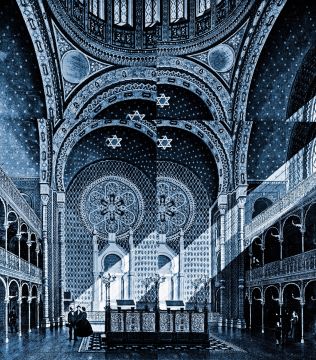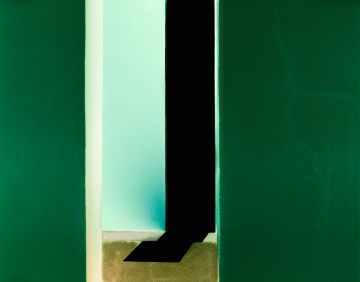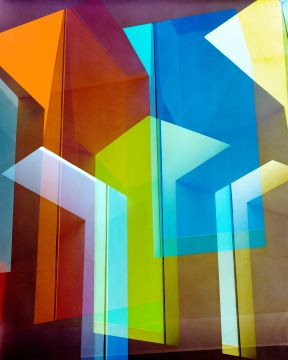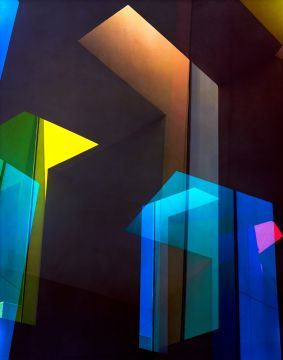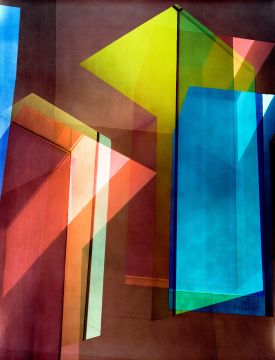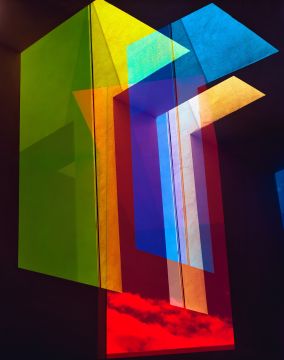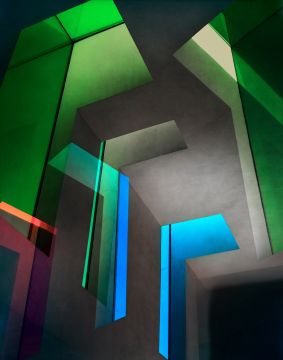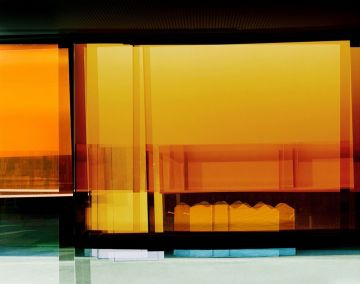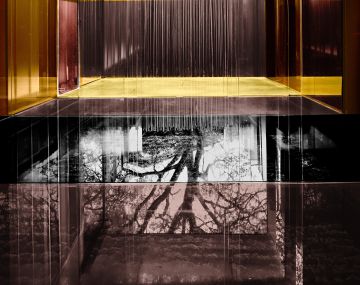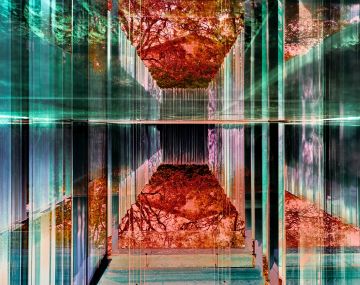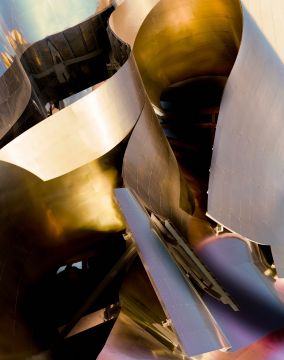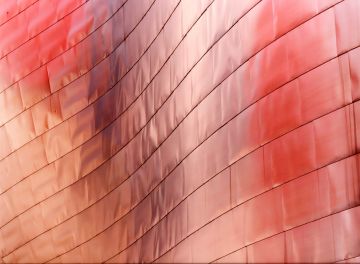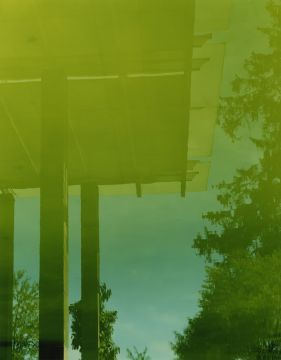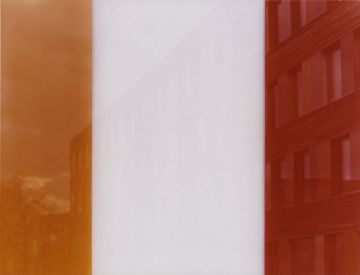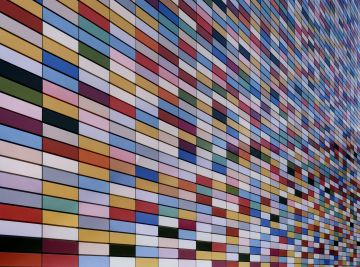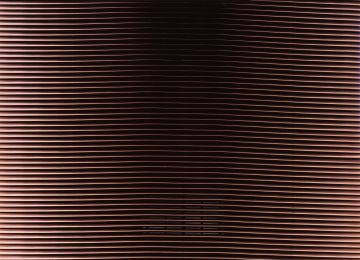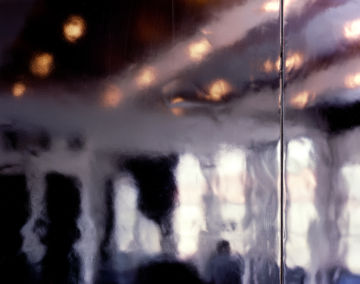Back to Square Black
In his new series 'Back to Square Black', Ola Kolehmainen examines both art history and his own personal timeline. The multi-layered nature of history is the connecting thread that runs through his latest works, which take their cue from The Black Square, the iconic 1915 painting by Kazimir Malevich (1879-1935). With this new series, the black square makes a reprisal in Kolehmainen’s work, for it was already the hero of his graduate exhibition at Kluuvi Gallery in 1997, which highlighted futurist-inspired light box pieces and black squares. His latest works are similarly inspired by futurism, constructivism, and minimalism, but it is Malevich – whose work was greatly influenced by church architecture and icons – with whom Kolehmainen has an enduring personal connection.
Not a single new photograph was taken for this series, which consists purely of the artist’s archived material from the early 2000s. Processing these existing images came closer to painting than the genre of photography. Kolehmainen reworked the photographs so that they become almost fictive and acquire new levels of historical significance. The artist describes his process as experimental mixed-media photography. The complex technique involved re-photographing existing images and printing them on a variety of different materials. The process began with the negatives, but the final outcome was impossible to predict.
MVSEVM
Ola Kolehmainen’s series ‘MVSEVM’ is a new body of work that was shot in iconic European museums such as the Glyptothek in Munich, Altes Museum in Berlin, and Victoria & Albert Museum in London. Instead of documenting the sites, Kolehmainen is interested in the abstraction of light and space. He stresses the fact that we see everything in fragments that are integrated into a coherent whole in the brain. Kolehmainen also photographs his works in fragments, which infuses them with a sense of the uncanny and the metaphysical. Other key elements in the MVSEVM series are time and atmosphere. Kolehmainen sees museums as sacred spaces that offer a chance for dialogue across centuries. Museums and their collections are for him like time machines in which the past and the present meet and where time can almost be transcended.
Sacred Places
With the series 'Sacred Places' Kolehmainen has shifted away from his traditional minimalism, and expanded into a complex approach dealing with space, light, and colour. The series depicts ancient churches, synagogues and mosques reminding us of the interwoven history of the religions they represent. In addition to their historical dimension, the artist probes the buildings’ architectural volumes and light ratios: the buildings’ interiors and structural details reveal the changing light of days and seasons. The photographs’ textured ornamentation reflects historical layers and decorative interiors. Space and light are masterfully handled in Kolehmainen’s images to successfully capture the sublime essence of these historic buildings.
Cathedral of Light
Can the holdings of image archives or photography collections inspire new works of art? This question is the focus of the project 'Artist Meets Archive' (AMA) of the Internationale Photoszene Köln, within which Ola Kolehmainen has created the series 'Cathedral of Light'. In this series he deals with the duality of the photographic medium as a haptic object with its very own aesthetics on the one hand and as an information carrier on the other. He is doing this by using historical photographs from the Rheinisches Bildarchiv (RBA). ‘Cathedral of Light' shows new photographic artworks, in which Ola Kolehmainen processes sacred interiors and exteriors. The aspects of light, space and colour play a decisive role. He is particularly interested in the 'old light' and the interplay of light and space within the places that have been documented in photographs or drawings. He questions the historical space-light conditions and processes them using traditional and digital photographic techniques.
Geometric Light
In the series 'Geometric Light', it is especially the light and thus the colours that captivate the artist and also the viewer. Kolehmainen adds new perspectives to his dialogue with architecture in urban environments. Now, it is no longer only the facades, but also light and shadows in the interior of buildings that start to play a decisive role. But here, too, the reflections are ultimately more important than the architecture. Not only in the image itself, but also through the reflections from the photographic surface. In this context, Kolehmainen composes highly abstracted images, which are built up from geometric, coloured light phenomena and develop a strong painterly effect. These works evoke constructivist watercolours by Paul Klee or paintings by Frantisek Kupka, but also transparent objects by Naum Gabo.
Earlier works
In his earlier works Kolehmainen reduces buildings to their ornamental character. What appeals to him are the geometric grids of façade surfaces, ceiling designs or reflecting window openings on the selected landmarks of architectural history. Where nature meets architecture as a reflection, his minimalist, aesthetic work begins, which was strongly influenced by James Turell and Carl Andree in the 2000s. The artist extracts his specific statements about architecture and space, silence, beauty and harmony from both the structure and the colourfulness, as well as the history of construction and the specific lighting conditions.
